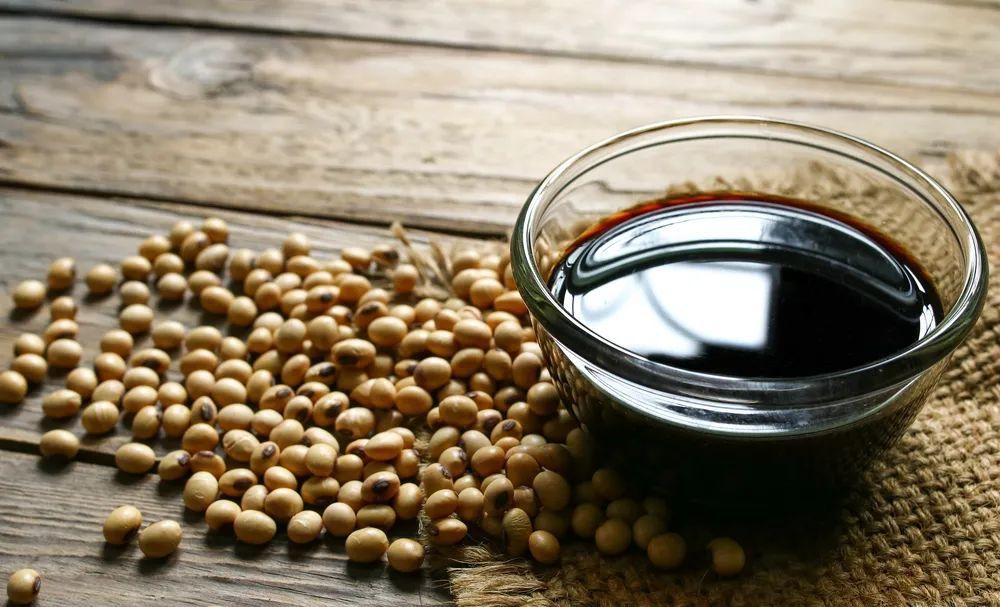Soy sauce is a condiment made from the fermentation of protein raw materials and starch raw materials. The raw materials commonly used are soybeans, soybean meal, wheat and bran.
The amino acids contained in soy sauce are not only the nutrients needed by the human body, but also provide umami flavor to soy sauce. In the fermentation process, due to the action of microorganisms, a variety of small molecular substances such as acids, alcohols, and phenols are produced to add flavor. At the same time, it will produce melanoids, brownish-red pigments, etc., adding a dark brown color.
Therefore, adding soy sauce to dishes can play the role of "full color and flavor".

Image source: Stand Cool Helo
What is regular soy sauce?
—
Ordinary soy sauce, between raw soy sauce and dark soy sauce, has a heavier color, a heavier taste, a bitter taste and a salty taste. It takes a long time to heat up to create a rich sauce flavor, so try not to add it before it comes out of the pan.
The process of making soy sauce is slightly different between the north and the south. The lower temperature in the northern region is more suitable for "solid fermentation" to make soy sauce, while the higher temperature and higher humidity in South China are more suitable for "dilute fermentation".
The soy sauce extracted by the latter for the first time is called "head pumping oil", the raw materials are taken back for secondary fermentation and then pumped out is called "two pumping oil", and the third fermentation is called "three pumping oil".
Light soy sauce is suitable for fresh and cold mixing
Raw soy sauce is soy sauce after the head pumping oil, the second pumping oil and the third pumping oil are mixed in proportion.
Relatively speaking, the head soy sauce contains the most umami substances, so in general, the quality of the raw soy sauce with a higher proportion of head pumping oil will be of better quality.
For soy sauce, the color is lighter and the taste is delicious, with a strong smell of soy sauce. Therefore, soy sauce is generally used for cold mixing or stir-frying.
"Extremely fresh" is also a type of soy sauce, which belongs to raw soy sauce. It is just that it adds some umami additives in the process of making, so that the umami taste will be more prominent and the taste will be more mellow.
When cooking, you can use "very fresh taste" instead of monosodium glutamate or chicken essence to enhance the flavor and texture of the dish.
The old soy sauce is suitable for coloring
Soy sauce is the soy sauce obtained after further processing and concentration of these "pumped oils". The soy sauce will be darker in color, the taste will be fresher, the viscosity will be greater, and the taste will be more salty.
The main use of soy sauce is to color dishes. For example, when making braised dishes, marinated dishes, and stewed dishes, you will often use old soy sauce to deepen the color of the dishes.
Some soy sauces add some "caramel color" to further deepen the color.
Steamed fish soy sauce is also soy sauce
Steamed fish soy sauce is also a type of soy sauce. "Soy sauce" actually refers to "soybeans", and steamed fish soy sauce is soy sauce brewed from soybeans.
In order to enhance the freshness and strong taste, some food sweeteners are added in the production process, and the taste is salty and sweet, making the fish more delicious and fragrant.
No matter what kind of soy sauce
It is important to eat less and add less
Everyone knows that salt can't eat too much, so why not put more soy sauce instead?
In fact, soy sauce also contains a lot of "invisible salt". Excessive consumption also increases the risk of diseases such as high blood pressure, calcium deficiency and stomach cancer.
When using it, try to take the "point, dip" way to add a small amount.